The "barefaced ibis" (bird) - El "ibis afeitado" (ave).
(Edited)
The group of birds I show in the photographs I found in the vicinity of the University of Carabobo (Naguanagua, Carabobo, Venezuela) and belong to the species Phimosus infuscatus. It has many common names but the most commonly used is "barefaced ibis". Phimosus infuscatus has three subspecies: Phimosus infuscatus infuscatus, Phimosus infuscatus berlepschi and Phimosus infuscatus nudifrons. The "barefaced ibis" occurs in the tropics and parts of the subtropics of South America east of the Andes, from Colombia to Argentina, excluding the Amazon River itself.
El grupo de aves que muestro en las fotografías lo encontré en las inmediaciones de la Universidad de Carabobo (Naguanagua, Carabobo, Venezuela) y pertenecen a la especie Phimosus infuscatus. Tiene muchos nombres comunes pero el más utilizado es "ibis afeitado". Phimosus infuscatus tiene tres subespecies: Phimosus infuscatus infuscatus, Phimosus infuscatus berlepschi y Phimosus infuscatus nudifrons. El "ibis afeitado" se encuentra en los trópicos y partes de los subtrópicos de Sudamérica al este de los Andes, desde Colombia hasta Argentina, excluyendo el propio río Amazonas.
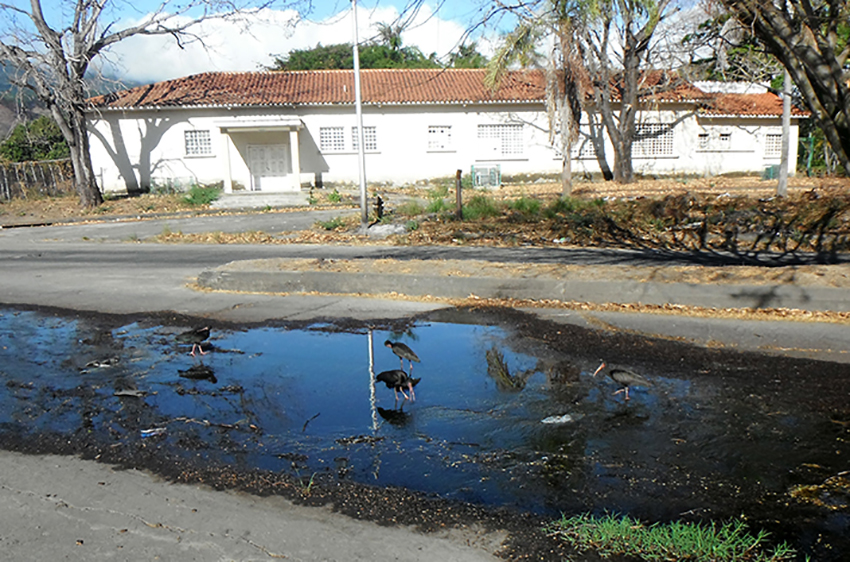
The "barefaced ibis" is a small dark ibis that measures between 46 and 56 centimeters long and weighs about 578 grams. The basic plumage colour of the adult is black but glossed with a bronzy green or blue, more so above and on the tail and wings than below; the green or blue color can be seen in photographs where the birds are exposed to sunlight, in poor light they look dark.
El "ibis afeitado" es un pequeño ibis oscuro que mide entre 46 y 56 centímetros de largo y pesa unos 578 gramos. El color básico del plumaje del adulto es negro, pero brillante con un verde o azul bronceado, más por encima y en la cola y las alas que por debajo; el color verde o azul se puede ver en las fotografías donde las aves están expuestas a la luz solar, con poca luz se ven oscuros.

The forehead, face and chin (gular area or pouch) are bare, thus providing the most common name, "barefaced ibis". These and the bill are reddish, with coloration ranging from flesh-colored to reddish brown during the non-breeding season.
La frente, la cara y la barbilla (zona gular o bolsa) están desnudas, de ahí el nombre más común, "ibis afeitado". Éstas y el pico son rojizos, con una coloración que va del color carne al marrón rojizo durante la época no reproductiva.
The long decurved bill is slightly serrated, the same colour as the face. The forehead may be covered with papillae or corrugations.
El pico largo y decurvado está ligeramente aserrado, y es del mismo color que la cara. La frente puede estar cubierta de papilas u ondulaciones.
Leg colors are highly variable, ranging from yellowish to whitish pink, reddish, gray and tan to brown.
Los colores de las patas son muy variables, pueden ser amarillentas a rosa blanquecino, rojizas, gris y bronceadas a marrón.
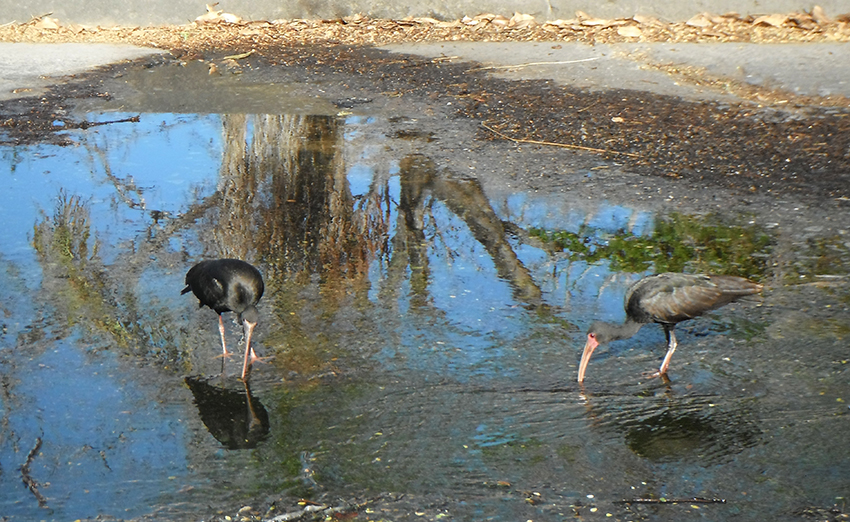
The three subspecies named are described on the basis of slight differences in plumage and soft part colors. All have a bare pink to reddish face. The subspecies berlepschi has a relatively dark reddish-brown bill with a blackish tip and a deep red face. The subspecies nudifrons has a paler clay-colored bill, a brick-red face and a green gloss on its hindneck feathers. Its forehead and face are rough and ridged. The subspecies infuscatus is smaller and shorter-billed than nudifrons, and has a pale clay-colored to cream bill, although grayish-red has also been reported.
Las tres subespecies nombradas se describen sobre la base de ligeras diferencias en el plumaje y los colores de las partes blandas. Todas tienen el rostro desnudo de color rosa a rojizo. La subespecie berlepschi tiene un pico marrón rojizo relativamente oscuro con punta negruzca y un rostro rojo intenso. La subespecie nudifrons tiene el pico de color arcilla más pálido, la cara de color rojo ladrillo y un brillo verde en las plumas del cuello. Su frente y su cara son ásperas y estriadas. La subespecie infuscatus es más pequeña y de pico más corto que la nudifrons, y tiene un pico de color arcilla pálido a crema, aunque también se ha informado de color rojo grisáceo.
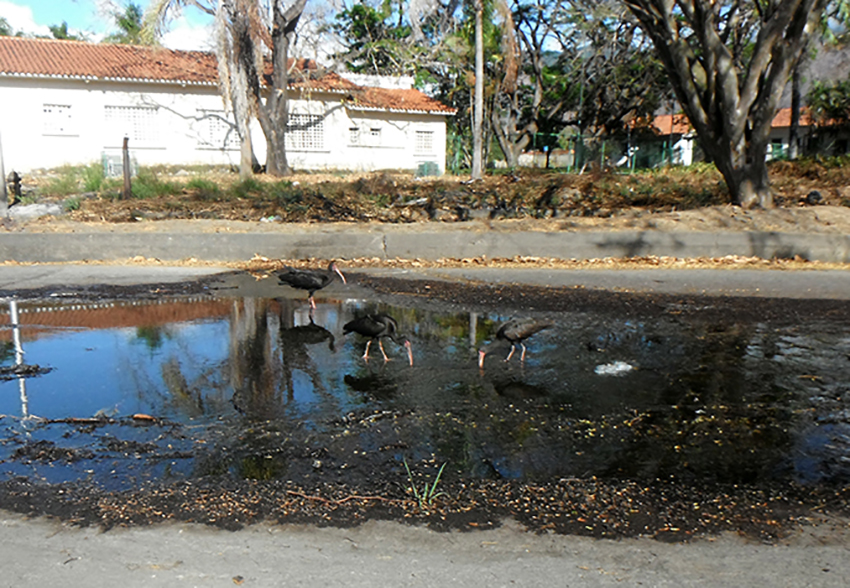
The sexes are considered to be similar, but reviews suggest that males tend to be larger than females, at least in weight and bill length.
Se considera que los sexos son similares, pero revisiones realizadas sugieren que los machos tienden a ser más grandes que las hembras, al menos en peso y en la longitud del pico.
The "barefaced ibis" is a bird of open swampy areas, savannas, wet meadows and fields. It feeds in moist grounds, shallow water, puddles, along streams and on the shore of ponds and lagoons. On the coast, it feeds in tidal areas.
El "ibis afeitado" es un ave de zonas pantanosas abiertas, sabanas, praderas húmedas y campos. Se alimenta en terrenos húmedos, aguas poco profundas, charcos, a lo largo de arroyos y en la orilla de lagunas y estanques. En la costa, se alimenta en las zonas de marea.
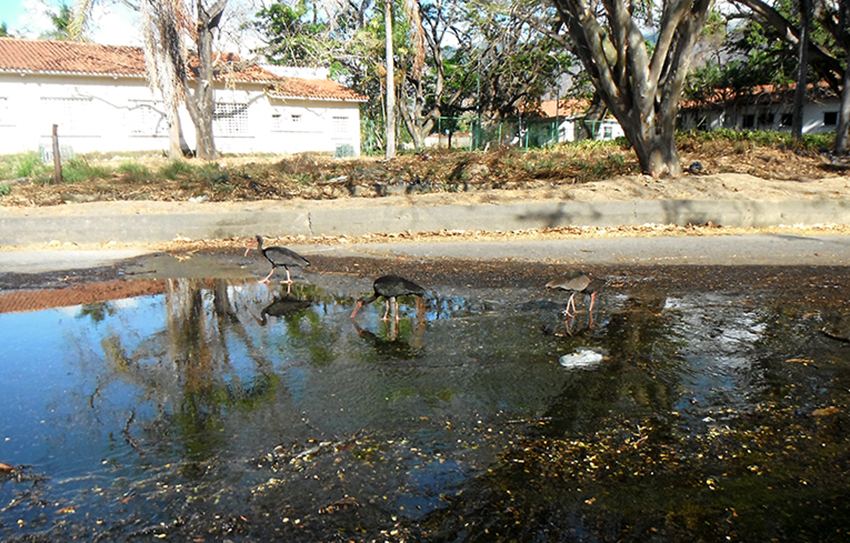
It feeds by walking slowly on mud, moist land or in shallow water, while probing the soil or shallow water with its bill. Owing to its relatively long bill, it can probe rather deeply in the water or soft mud but also pecks rapidly at the surface. To feed, it walks actively while probing every 1 to 3 steps. Probing sites are typically at the edge of puddles and muddy spots.
Se alimenta caminando lentamente sobre el lodo, la tierra húmeda o en aguas poco profundas, mientras sondea con su pico el suelo o las aguas poco profundas. Debido a su pico relativamente largo, puede sondear bastante profundamente en el agua o en el barro blando, pero también picotea rápidamente en la superficie. Para alimentarse, camina activamente mientras sondea cada 1 a 3 pasos. Los lugares de sondeo suelen estar en el borde de los charcos y los lugares fangosos.
The "barefaced ibis" typically feeds gregariously (communally), often in small flocks of a few birds, but occasionally in flocks of up to several hundred. The "barefaced ibis" has been documented to eat soil invertebrates, such as worms and beetle larvae, as well as small crabs, fish, mollusks, including freshwater clams, and aquatic insects. Seeds and leaves have been found in its stomachs.
El "ibis afeitado" se alimenta normalmente de forma gregaria (en comunidad), a menudo en pequeñas bandadas de unos pocos pájaros, pero ocasionalmente en bandadas de hasta varios cientos. Se ha documentado que el "ibis afeitado" come invertebrados del suelo, como gusanos y larvas de escarabajos, así como pequeños cangrejos, peces, moluscos, incluidas almejas de agua dulce, e insectos acuáticos. En sus estómagos se han encontrado semillas y hojas.

"barefaced ibises" nest in dense bushes, in colonies that are reused in successive seasons. They usually nest in small groups within larger mixed-species colonies containing cormorants, herons and other ibises. They also nest in small monospecific colonies of a few to 10 nests. Typically, for example in Los Llanos, Venezuela, they begin nesting in the rainy season from May to late October. They seem to respond quickly to the onset of the rainy season, commencing to nest within two weeks of the beginning of the rains.
Los "ibis afeitados" anidan en densos arbustos, en colonias que se reutilizan en temporadas sucesivas. Suelen anidar en pequeños grupos dentro de colonias más grandes de especies mixtas que contienen cormoranes, garzas y otros ibis. También anidan en pequeñas colonias monoespecíficas de unos pocos a 10 nidos. Típicamente, por ejemplo en Los Llanos de Venezuela, comienzan a anidar en la temporada de lluvias desde mayo hasta finales de octubre. Parece que responden rápidamente al inicio de la temporada de lluvias, comenzando a anidar en las dos semanas siguientes al comienzo de las mismas.
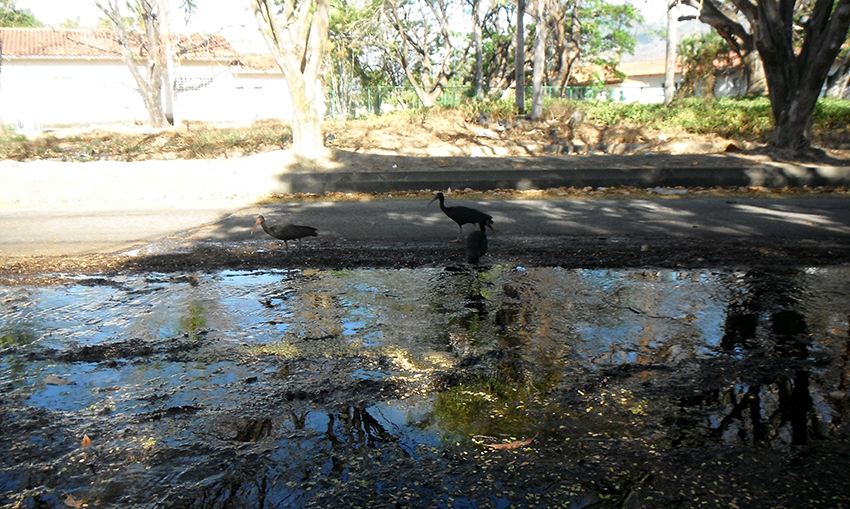
In pair formation, males gather in display groups in variable locations with the composition of the display party changing frequently. Fighting between males seems to be minimal. Erect postures and display shakes occur as other males approach too closely. The birds display more often in the mornings and late afternoons, departing the display grounds in midday except during the peak of the courtship period. The most common behaviour is display preening, directed to all parts of the body, most often to the back with the wings held open and one of them drooped. Feathers on the neck and back may be raised slightly. During this display, the bird may also perform a head rub, touching, holding or rubbing the top of its head to its back.
En la formación de parejas, los machos se reúnen en grupos de exhibición en lugares variables con la composición del grupo de exhibición cambiando frecuentemente. Las peleas entre machos parecen ser mínimas. Las posturas erguidas y las sacudidas de exhibición ocurren cuando otros machos se acercan demasiado. Las aves se exhiben más a menudo por las mañanas y a última hora de la tarde, abandonando el área de exhibición al mediodía, excepto durante el pico del periodo de cortejo. El comportamiento más común es el acicalamiento de exhibición, dirigido a todas las partes del cuerpo, más a menudo a la espalda con las alas abiertas y una de ellas caída. Las plumas del cuello y de la espalda pueden levantarse un poco. Durante esta exhibición, el ave también puede realizar un frotamiento de la cabeza, tocando, sosteniendo o frotando la parte superior de su cabeza contra su espalda.

The nest-site is selected after initial pair-formation. The new pair moves from the highly visible display perch to a more suitable nest-site within the canopy, where pair formation displays are continued. Early copulation takes place at the display site, later copulations at the nest site. Promiscuous matings are common.
El lugar del nido se selecciona después de la formación de la pareja inicial. La nueva pareja se desplaza desde la percha de exhibición, muy visible, a un lugar de nidificación más adecuado dentro de la cubierta, donde continúan las exhibiciones de formación de la pareja. La cópula inicial tiene lugar en el lugar de exhibición, y las posteriores en el lugar del nido. Los apareamientos promiscuos son comunes.
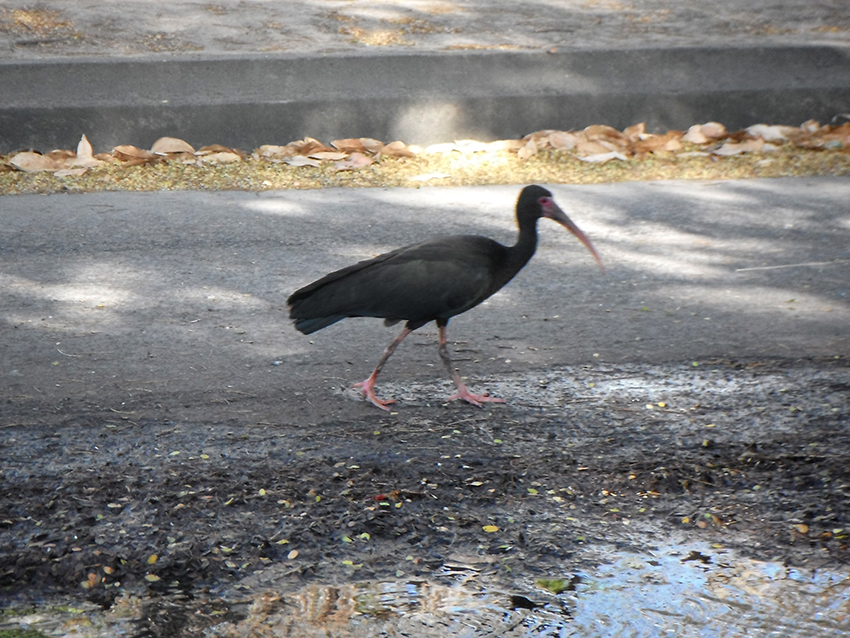
The male gathers material for the nest, which is built by the female. Nest-construction may continue into incubation. The nest is placed rather inconspicuously deeply within the branches of thick, often thorny, shrubs and trees usually over water. The nest is a rather small, flat platform of sticks, 30-35 centimeters wide.
El macho recoge material para el nido, que es construido por la hembra. La construcción del nido puede continuar durante la incubación. El nido se coloca de forma bastante discreta en las ramas de arbustos y árboles gruesos, a menudo espinosos, normalmente sobre el agua. El nido es una plataforma de palos bastante pequeña y plana, de 30-35 centímetros de ancho.
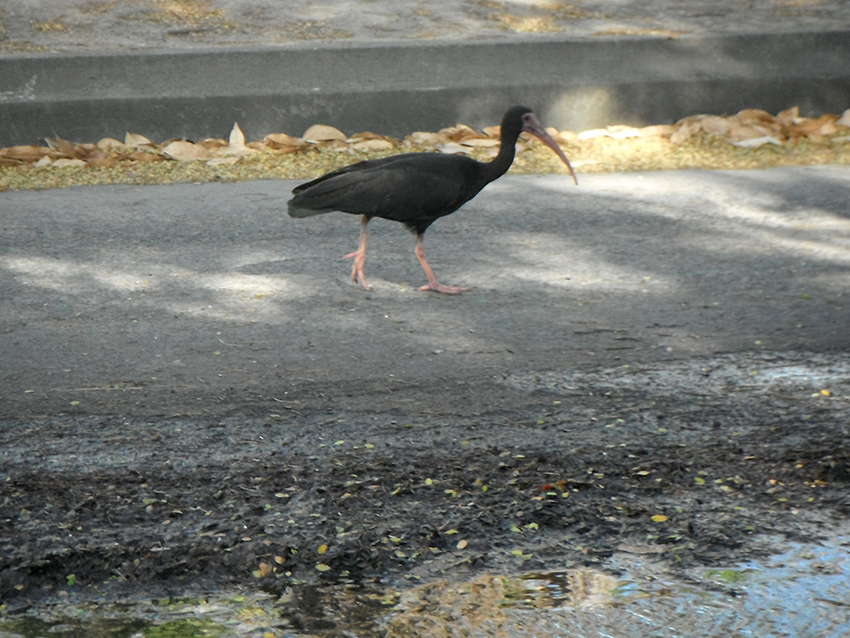
Eggs are bluish-green and unmarked. Nests with 2 to 6 eggs have been observed, with 3 or 4 being the most common. These eggs have an average size of 47 X 34 millimeters. Both parents incubate, for a period of 21 to 23 days, and attend the nest until the young are approximately one week old.
Los huevos son de color verde azulado y no están marcados. Se han observado nidos con 2 a 6 huevos, siendo de 3 o 4 los más comunes. Estos huevos tienen un tamaño medio de 47 X 34 milímetros. Ambos padres incuban, durante un periodo de 21 a 23 días, y atienden el nido hasta que las crías tienen aproximadamente una semana de edad.
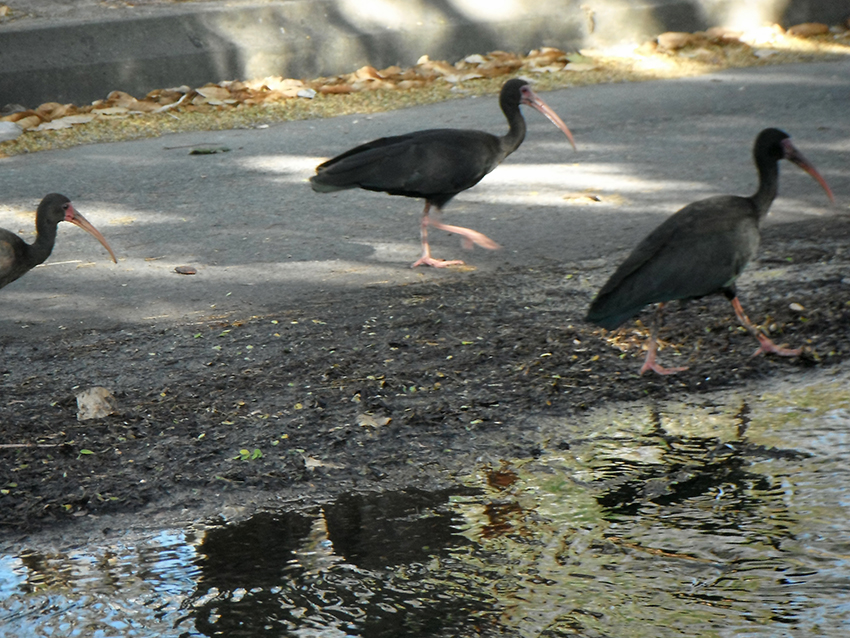
In addition to the threat of intruding ibises, the eggs are at risk from predators. For example, eggs are eaten by the boa (Constrictor constrictor), the tegu lizard (Salvator merianae) and predatory birds. Adults did not interfere with the lizard eating their eggs. The threat of predation and the lack of nest defense explain the secluded position of the nest.
Además de la amenaza de los ibis intrusos, los huevos corren el riesgo de los depredadores. Por ejemplo, los huevos son devorados por la boa (Constrictor constrictor), el lagarto overo (Salvator merianae) y aves depredadoras. Los adultos no interfieren con el lagarto que come sus huevos. La amenaza de depredación y la falta de defensa del nido explican la posición aislada del nido.
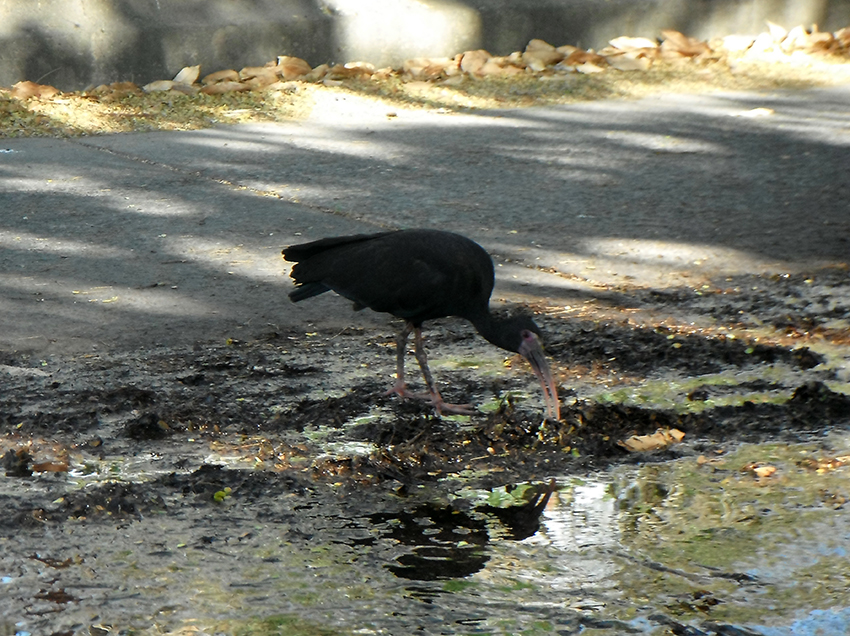
Exchanges in the nest occur up to 6 times per day and when the relieving bird arrives, both duet and display together. Males may also continue to supply twigs. Later in nesting, exchanges include less display.
Los intercambios en el nido se producen hasta 6 veces al día y cuando llega el ave de relevo, ambos hacen un dúo y se exhiben juntos. Los machos también pueden seguir aportando ramitas. Más adelante en la nidificación, los intercambios incluyen menos exhibición.
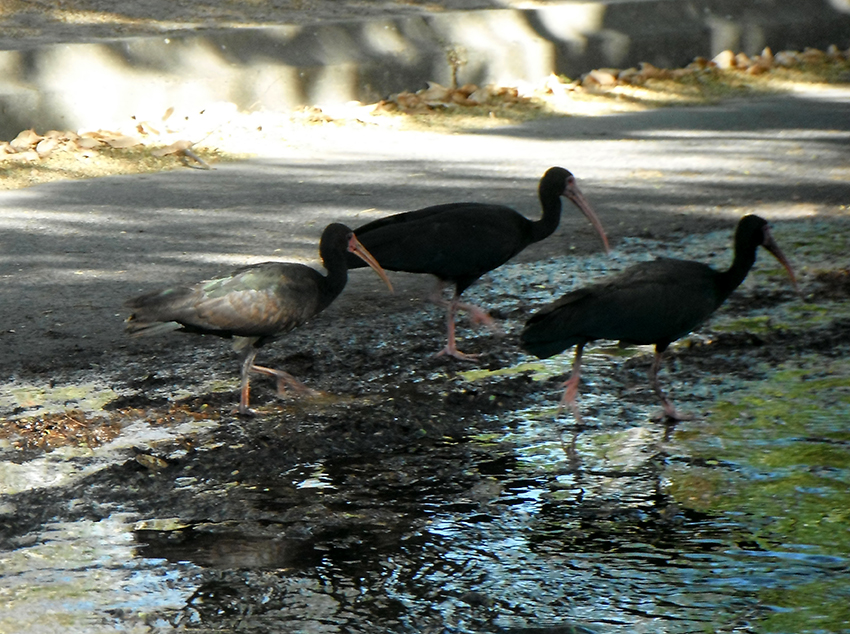
The young hatch asynchronously and are altricial (born blind, with closed ear canals, no feathers and very limited mobility). After several days, all chicks may be the same size. The young are silent, except for the light buzzing call given at feedings by older nestlings. Like the eggs, nestling are at risk to predation, and the young will leave their nest in response to disturbance. They depart the nest permanently between 22 and 27 days and fledge between 27 and 30 days.
Los jóvenes nacen de forma asincrónica y son altriciales (nacen ciegas, con conductos auditivos cerrados, sin plumas y con movilidad muy limitada). Después de varios días, todos los polluelos pueden tener el mismo tamaño. Los jóvenes son silenciosos, excepto por el ligero zumbido que emiten los polluelos de más edad al alimentarse. Al igual que los huevos, los pollos corren el riesgo de ser depredados, y los jóvenes abandonan el nido en respuesta a perturbaciones. Abandonan el nido definitivamente entre los 22 y 27 días y emplumecen entre los 27 y 30 días.
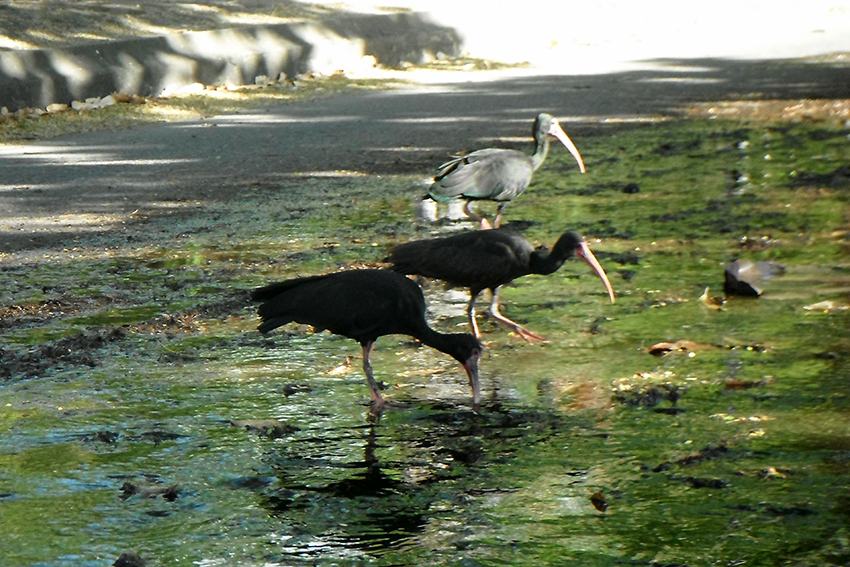
This bird can be watched on video, in another environment near a river.
Esta ave se puede ver en video, en otro entorno cerca de un río.

Imágenes capturadas con cámara digital Fujifilm FinePix Z90.

0
0
0.000
Nice post. Thank you.
Hi @birdwatcher, in the reference I posted from Hancock, Kushlan and Kahl (1992) the link allows you to download an interesting book (in pdf) on storks, ibis and spoonbills of the world; the file size is almost 51 MB.
Su post ha sido valorado por @ramonycajal
Gracias estimado equipo de @ramonycajal.
¡Felicitaciones!
Estás participando para optar a la mención especial que se efectuará el domingo 29 de mayo del 2022 a las 8:00 pm (hora de Venezuela), gracias a la cual el autor del artículo seleccionado recibirá la cantidad de 1 HIVE transferida a su cuenta.
¡También has recibido 1 ENTROKEN! El token del PROYECTO ENTROPÍA impulsado por la plataforma Steem-Engine.
1. Invierte en el PROYECTO ENTROPÍA y recibe ganancias semanalmente. Entra aquí para más información.
2. Contáctanos en Discord: https://discord.gg/hkCjFeb
3. Suscríbete a nuestra COMUNIDAD y apoya al trail de @Entropia y así podrás ganar recompensas de curación de forma automática. Entra aquí para más información sobre nuestro trail.
4. Visita nuestro canal de Youtube.
Atentamente
El equipo de curación del PROYECTO ENTROPÍA
Saludos equipo @entropia, gracias.